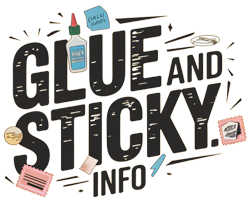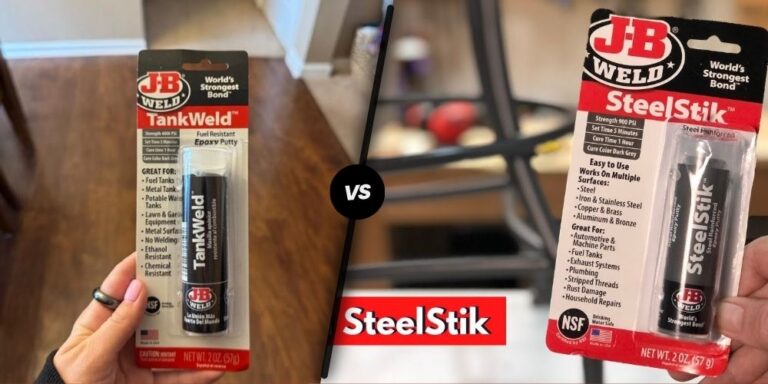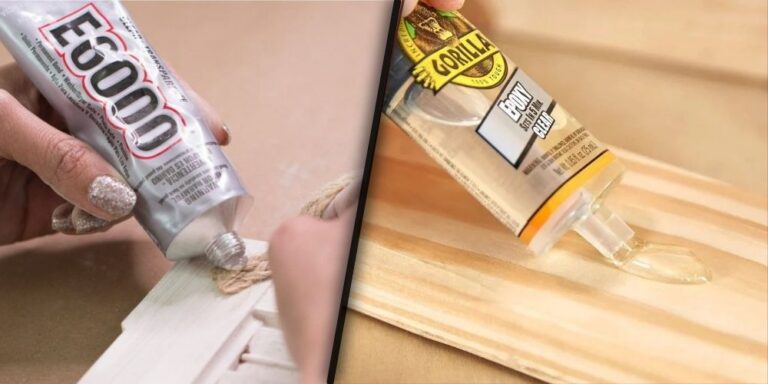JB Weld Plastic Bonder vs Plastic Weld Compared
When it comes to repairing or bonding plastic materials, choosing the right adhesive is critical to ensuring a long-lasting, durable result. J-B Weld, a leading brand in adhesives, offers two popular products for plastic repairs: Plastic Bonder and PlasticWeld.
While both products are designed to work with plastic, they differ in their formulation, bonding strength, curing time, and other key characteristics. This article will provide an in-depth comparison to help you decide which product best suits your project.
Overview of J-B Weld Plastic Bonder
What is Plastic Bonder?
J-B Weld Plastic Bonder is a two-part, urethane-based adhesive system designed to provide a quick and strong bond. It has a 1:1 mixing ratio and can be sanded, shaped, and painted once cured. This product is ideal for both structural and cosmetic repairs.
Features of Plastic Bonder:
- Tensile Strength: 3770 PSI
- Set Time: 15 minutes
- Cure Time: 30 minutes
- Cure Color: Tan
- Compatible Materials: Thermoplastics, carbon fiber composites, thermoset composites, coated metals, concrete, and wood
Common Applications:
- Automotive body panels and trim
- Plastic bumpers and fenders
- Composite panels and parts
- Household repairs and crafts
Overview of J-B Weld PlasticWeld
What is PlasticWeld?
J-B Weld PlasticWeld is a two-part epoxy adhesive that works on various materials, including plastic, metal, and ceramic. It has a fast setting time of 5 minutes and cures fully within an hour. PlasticWeld is suitable for projects that require quick repairs and high bond strength.
Features of PlasticWeld:
- Tensile Strength: 3900 PSI
- Set Time: 5 minutes
- Cure Time: 1 hour
- Cure Color: Translucent yellow
- Compatible Materials: Metal, glass, PVC, ABS, rigid plastics, vinyl, fiberglass, tile, and ceramics
Common Applications:
- Automotive and mechanical repairs
- Plastic containers, pipes, and rigid surfaces
- DIY and household repairs
- Industrial and commercial use
Performance Comparison
This section compares the two adhesives in terms of key performance metrics, including tensile strength, curing time, and material compatibility.
1. Tensile Strength
Tensile strength refers to the amount of tension an adhesive can withstand before breaking. This is a critical factor for applications where the repair must endure stress and strain.
| Adhesive | Tensile Strength (PSI) | Application Impact |
|---|---|---|
| Plastic Bonder | 3770 PSI | Suitable for moderate-to-high stress |
| PlasticWeld | 3900 PSI | Higher stress tolerance |
PlasticWeld has a slightly higher tensile strength, making it a better choice for heavy-duty applications where high loads or forces may be involved.
2. Setting and Curing Time
The setting and curing times affect how quickly you can work on a project and how soon it will be ready for use.
| Adhesive | Set Time | Cure Time | Best Use Scenario |
|---|---|---|---|
| Plastic Bonder | 15 minutes | 30 minutes | Ideal for projects requiring precision |
| PlasticWeld | 5 minutes | 1 hour | Best for quick repairs |
PlasticWeld sets much faster than Plastic Bonder, making it the preferred option for rapid repairs. However, if your project requires more working time for precise adjustments, Plastic Bonder may be better.
3. Compatibility and Versatility
Both products are designed for bonding plastic, but they also have different levels of compatibility with other materials.
- Plastic Bonder: Works well with thermoplastics, composites, coated metals, and concrete. It is ideal for bonding dissimilar materials such as plastic and metal.
- PlasticWeld: Provides excellent adhesion to rigid plastics like PVC and ABS, as well as metal, glass, and ceramic. It is highly versatile for a variety of repair applications.
If your project involves multiple types of materials, PlasticWeld may be the more flexible option.
Resistance and Durability
Durability and resistance to environmental factors such as impact, vibration, and shrinkage are crucial for long-term performance.
- Plastic Bonder: Offers excellent impact resistance and is less prone to shrinking during curing.
- PlasticWeld: Provides strong resistance to wear and tear but may not be as resistant to shrinkage as Plastic Bonder.
Both adhesives are highly durable and suitable for demanding environments, but Plastic Bonder may have a slight edge in impact resistance.
Cost Efficiency and Ease of Use
Both products are cost-effective, but the choice between them often comes down to the nature of the project and the level of convenience required.
- Plastic Bonder: Requires a longer working time, allowing for adjustments and refinements during application.
- PlasticWeld: Sets quickly, making it ideal for emergency repairs and projects where time is of the essence.
In terms of ease of use, PlasticWeld’s fast setting time may be a double-edged sword. While it enables quicker project completion, it leaves less time for error correction during application.
Key Considerations When Choosing an Adhesive
When deciding between J-B Weld Plastic Bonder and PlasticWeld, consider the following factors:
- Time Sensitivity:
For quick fixes, PlasticWeld’s fast curing time makes it ideal. For projects that require more precision, Plastic Bonder offers a longer working time. - Material Compatibility:
Ensure the adhesive you choose is compatible with the materials you are working with. Plastic Bonder excels at bonding composite materials, while PlasticWeld is more versatile across a range of surfaces. - Strength Requirements:
Both adhesives provide high tensile strength, but PlasticWeld has a slight edge for heavy-duty applications. - Aesthetic Concerns:
Plastic Bonder cures to a tan color, while PlasticWeld cures to a translucent yellow. If appearance matters, consider how the cured adhesive will look on your project.
Summary Table: Plastic Bonder vs PlasticWeld
| Feature | Plastic Bonder | PlasticWeld |
|---|---|---|
| Adhesive Type | Urethane adhesive | Epoxy adhesive |
| Tensile Strength | 3770 PSI | 3900 PSI |
| Set Time | 15 minutes | 5 minutes |
| Cure Time | 30 minutes | 1 hour |
| Cure Color | Tan | Translucent yellow |
| Compatible Materials | Thermoplastics, composites, metals | PVC, ABS, metal, glass, ceramic |
| Common Applications | Automotive trim, structural repairs | DIY, mechanical, and household repairs |
Conclusion
Both J-B Weld Plastic Bonder and PlasticWeld are reliable solutions for plastic bonding projects, each offering distinct advantages. If your project requires a fast-setting adhesive with high versatility, PlasticWeld is the better choice. On the other hand, if you need a product with strong impact resistance and more working time, Plastic Bonder is ideal.
Ultimately, the decision should be based on your project’s specific requirements, including material compatibility, strength needs, and time constraints. With the right adhesive, you can ensure that your repair or bonding project is successful and long-lasting.







